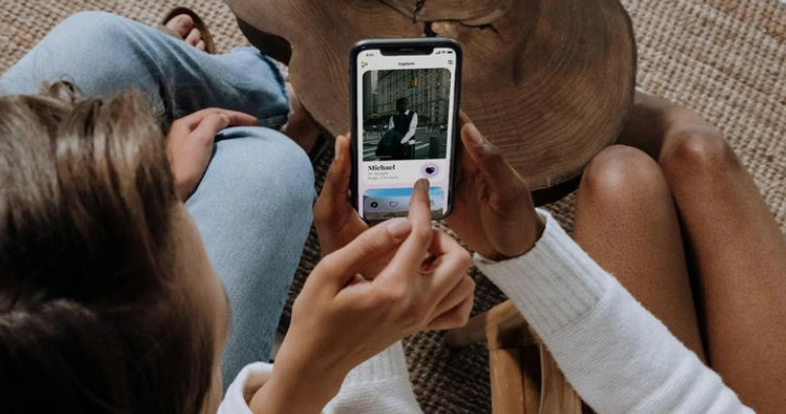Last Updated on July 25, 2025 by Rachel Hall
- New Height Filter on Tinder: How Height Filters Are Taking Off on Dating Apps — But Are They Getting in the Way of Finding True Love for the 5ft 6in Shorter Man?
- What Are Height Filters and Why Are They Taking Over Dating Apps Like Tinder and Bumble?
- The Hidden Bias Behind the Height Filter Obsession
- Real Love Stories That Algorithms Would’ve Erased
- Algorithms, Preferences, and the “Shopping Cart” Problem
- Why Filters May Be Keeping You From Falling in Love
- From “Short King Spring” to Changing Perspectives
- Should You Ditch the Height Filter Altogether?
- Final Thoughts — If You’re Looking for True Love, Filter Less and Feel More
New Height Filter on Tinder: How Height Filters Are Taking Off on Dating Apps — But Are They Getting in the Way of Finding True Love for the 5ft 6in Shorter Man?
In the evolving world of online dating, more and more people are prioritising convenience and preferences over possibility. One of the most controversial features gaining momentum is the height filter — a tool now included in premium tiers of major dating apps like Tinder, Hinge, and Bumble. These filters allow users to filter out potential matches by height, setting rigid parameters for who is considered worthy of a swipe.
On the surface, this seems harmless — just another way to refine your profile and seek out your ideal partner. But when height becomes a hard filter, are we reducing love to a set of arbitrary numbers? Are we letting algorithms — not connection — guide the way we meet others? In truth, height filters are taking over much more than your app settings. They may be quietly eroding your chances of finding genuine, lasting love.
What Are Height Filters and Why Are They Taking Over Dating Apps Like Tinder and Bumble?
A height filter allows paying users to set a minimum or maximum height range when searching for potential partners. For example, a woman might only view men who are 6ft or taller. This new filter is being trialled in select parts of the world, mostly among premium users using apps like Tinder.
According to a Tinder spokesperson, this feature is “part of a broader effort to help people connect more intentionally.” The logic is that by aligning with a user’s stated preference, the algorithm delivers more accurate matches. However, what’s marketed as an improvement in clarity and connection may be getting in the way of spontaneous, meaningful encounters.
The issue? You might be filtering out someone amazing — all because they’re an inch or two below your ideal.
The Hidden Bias Behind the Height Filter Obsession
There’s no denying that height plays a significant role in modern dating. Surveys and research show that many heterosexual women express a strong preference for taller men. This desire is often driven by deep-seated social norms — the idea that a tall man is more attractive, protective, and masculine.
One viral TikToker summarised the issue best: “You’re 5ft 3in, love. He’s 5ft 8in. That’s tall enough.” And yet, the fixation persists.
The problem arises when that preference is hardcoded into a dating app. With tools like the new height filter, dating app users are no longer making organic decisions. They’re feeding data into systems that echo back only what they think they want. Straight women may not even realise that their profile choices are shaped more by societal messaging than personal taste.
Real Love Stories That Algorithms Would’ve Erased
Take the case shared by the BBC, where Ashley, a tall woman at 5ft 9in, met Joe, a shorter man who stands at 5ft 6in, on Tinder. Their relationship blossomed through shared interests and emotional compatibility. Height never came up — until Ashley’s friends pointed it out.
Had a height setting been enabled on their Tinder profile, Joe might never have appeared in Ashley’s feed. But without the influence of a filter, they got the chance to get to know one another. They’re now living together and thriving — a relationship that could have been lost to a swipe.
These stories prove that love isn’t an attribute to be sorted and selected. Real connection happens when two people meet, often unexpectedly. But in an age where we’re able to filter so much, we may be throwing away good matches before they’ve even had a chance.
Algorithms, Preferences, and the “Shopping Cart” Problem
One of the most damaging effects of height filtering is the growing perception that dating is like online shopping. You pick a few filters — age, location, and now height — and hope the app delivers your ideal.
But dating apps are not innocent. They’re businesses, and their goal is to keep you engaged, often by selling premium users to filter potential matches. When people feel stuck or dissatisfied, they’re more likely to upgrade, keep swiping, and return to the app. It’s a monetised cycle of longing and lack.
And when we create a wishlist of physical traits — including partner’s height — we run the risk of bypassing people who offer deep emotional value. The algorithm might provide short-term satisfaction, but it can’t account for what makes someone truly lovable.
Why Filters May Be Keeping You From Falling in Love
When you choose to filter out someone based on height — say, ignoring a 5ft 7in man when your setting starts at 5ft 11in— you’re not just skipping a stat. You might be dismissing a kind, hilarious, emotionally available partner.
This isn’t a hypothetical. A CNN story reported that many men feel compelled to lie about their height on their profile, knowing they’ll be disqualified from even being seen. Some use lifts in their shoes. Others round up by an inch or two. Why? Because dating app users have turned height into a dealbreaker, even though it has no bearing on compatibility, character, or the ability to fall in love.
If you’re only looking for people over 6ft, are you genuinely narrowing down your soulmate? Or are you letting inches keep you from intimacy?
From “Short King Spring” to Changing Perspectives
There is a growing pushback to heightism, especially online. The phrase “short king” has become a term of endearment, popularised by users embracing confidence over conformity. As a movement, it challenges the outdated idea that only tall men are worthy of attention.
Apps are catching on. While Tinder’s new feature is controversial, other platforms have opted out entirely. Hinge, for example, allows users to list height but does not require it, nor does it offer a hard filter. This keeps discovery open and real-life chemistry possible.
The solution may lie not in abolishing filters, but in promoting greater awareness. Users need to question where their preference comes from — is it personal, or socially ingrained? Does it lead to connection, or reinforce exclusion?
Should You Ditch the Height Filter Altogether?
We’re not here to shame preferences. If you genuinely feel drawn to taller partners, that’s valid. But be aware of what happens when users can filter too precisely. You may be reducing your pool to a vanishingly small number.
Think about this: only 14.5% of American men are over 6ft. If every woman on a dating app sets that as a baseline, they’re all chasing the same tiny subset — and most will be left disappointed. This could explain the increasing dissatisfaction with online dating in recent years.
By being more flexible — say, considering a 5ft 9in man who shares your values — you open yourself to people who may bring immense joy into your life. You may even discover that your compatibility with someone has nothing to do with height and everything to do with humour, safety, empathy, and chemistry.
Final Thoughts — If You’re Looking for True Love, Filter Less and Feel More
So, are height filters helping us connect more intentionally on Tinder — or are they quietly sabotaging our dating lives?
There’s no doubt that filters offer convenience. But they come at a cost. When we view people as data, not humans, we block ourselves from the magic that happens when we least expect it. If you’re serious about the way of finding true love, it may be time to reconsider the role of height in your search.
You don’t need to delete your preferences — just loosen them. Turn off the height setting. Swipe with curiosity. Challenge the urge to control. And most importantly, remember this:
The best relationships often begin with surprise, not settings.
Rachel Hall, M.A., completed her education in English at the University of Pennsylvania and received her master’s degree in family therapy from Northern Washington University. She has been actively involved in the treatment of anxiety disorders, depression, OCD, and coping with life changes and traumatic events for both families and individual clients for over a decade. Her areas of expertise include narrative therapy, cognitive behavioral therapy, and therapy for traumatic cases. In addition, Rachel conducts workshops focusing on the psychology of positive thinking and coping skills for both parents and teens. She has also authored numerous articles on the topics of mental health, stress, family dynamics and parenting.

